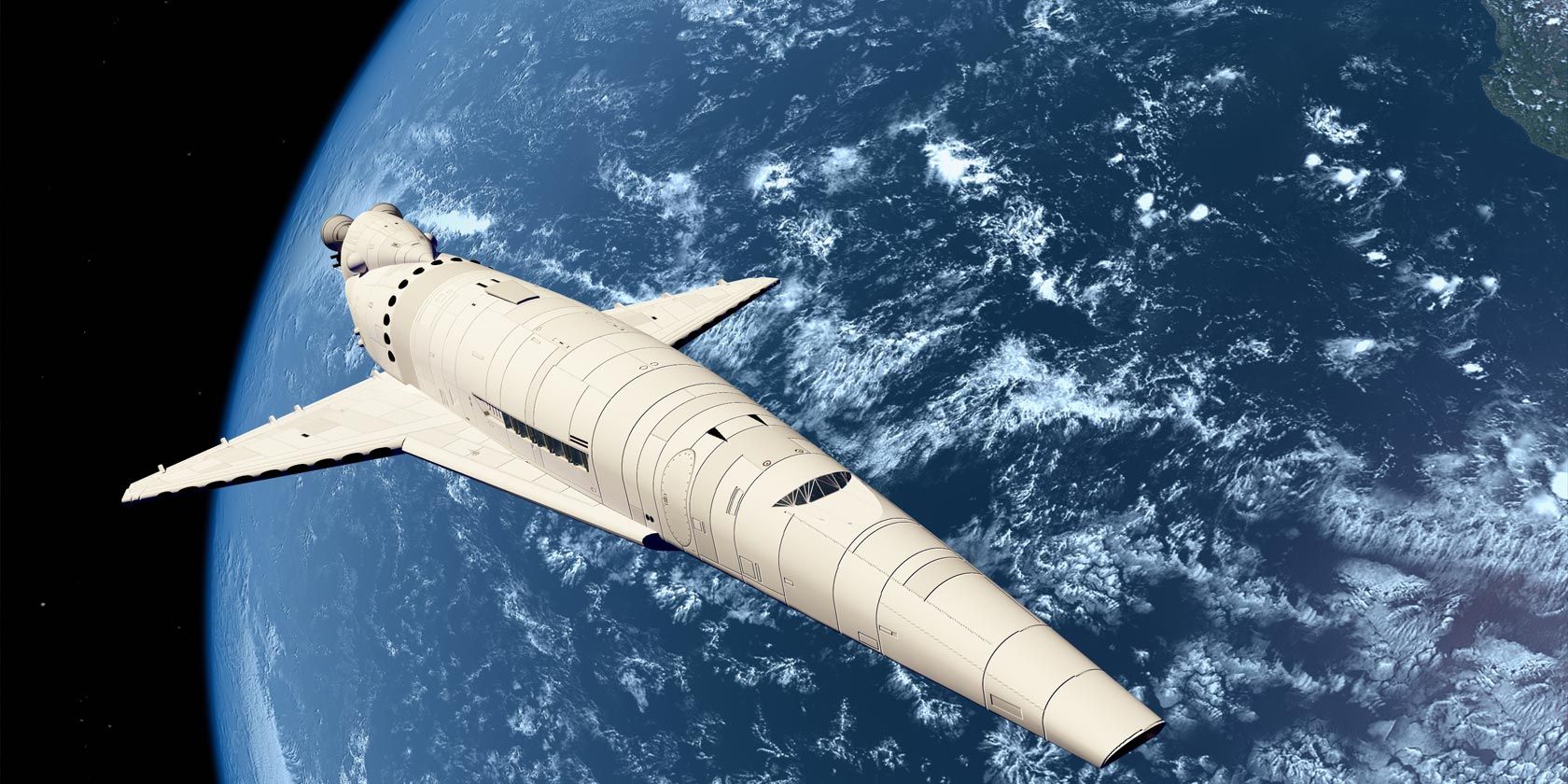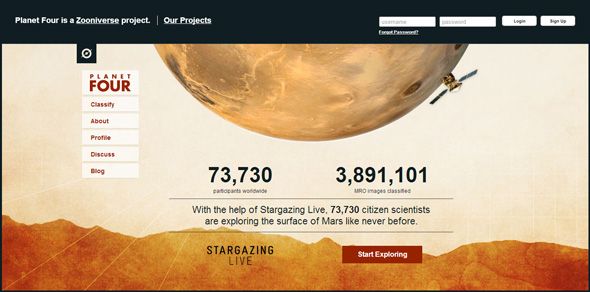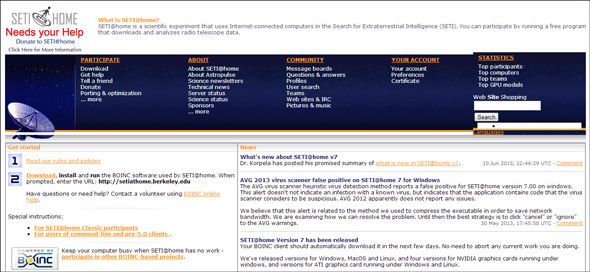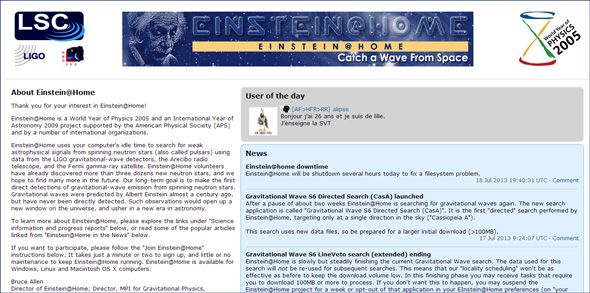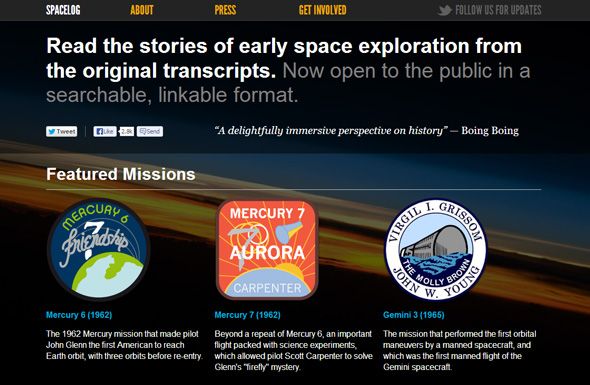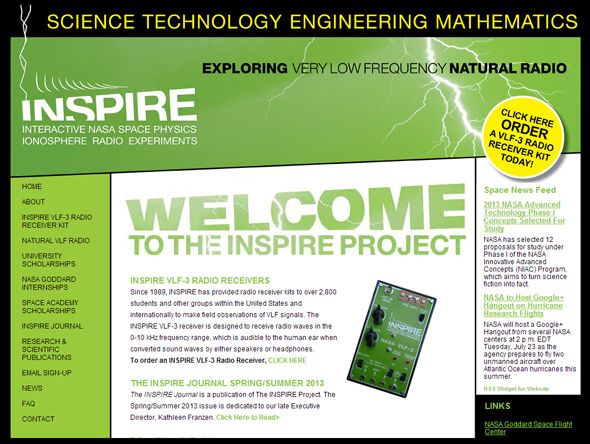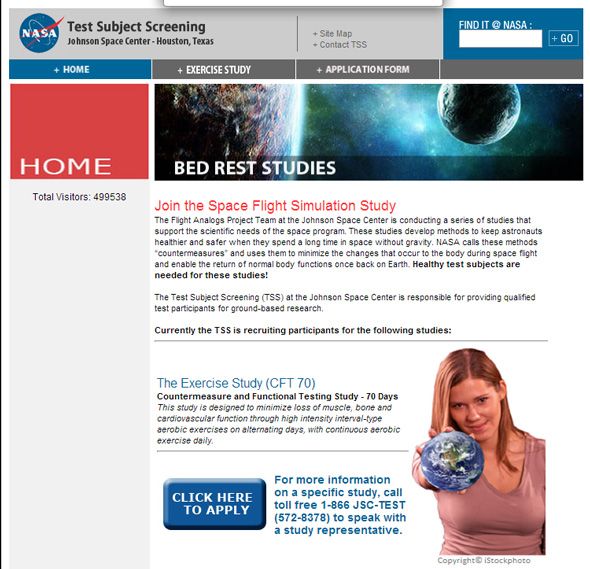If you saw "October Sky" and came away inspired, then you are the right candidate for this article. Flying in space is the stuff of childhood ambitions, and for the deserving few it does come true. I would say that today's generation is more fortunate because civilian space programs have broken free of the government-military-industrial shackles and staked their own ground. Space entrepreneurs like Richard Branson, Elon Musk, Eric Anderson and Peter Diamandis are just a few high-profile names who are pushing the boundaries for galactic exploration.
What about the man on the sidewalk? The high-schooler in the science class? The mother who once dreamt of suiting up for a space flight? Will there dreams remain so, or can they contribute to space exploration in some little ways? Thanks to the interconnectedness of the Web, they can. Let's take a look at seven online (and free) ways a citizen of Earth can contribute to understanding space.
Zooniverse
Your role: Take part in citizen science projects.
I had taken a long hard look at Zooniverse a couple of years back. The citizen science project is still going strong and it still hosts a league of science projects which can benefit with your active participation. Quite a few new projects have been added since I last wrote about it and it's not only about space anymore, but also about our own planet. If it’s just space you are enthused about, then you can explore the moon, the sun, Mars, and other planets too. For instance, you can study wind patterns on the Martian surface using the data from the Mars Reconnaissance Orbiter. Or come to PlanetHunters and search for new exoplanets. Y
ou can spend hours here exploring space with the browser as your spacecraft. There are nearly 850,000+ "citizen scientists" working on the different projects here.
SETI@Home
Your role: Search for extraterrestrial intelligence.
The Search for Extraterrestrial Intelligence project is one of the earliest examples of using crowdsourcing to achieve a common larger goal. It is also probably the largest crowdsourcing effort to date, or more technically one of the largest distributed computing projects in the world. The idea behind SETI@Home was simple as it was pathbreaking – donate your idle computer time to perform a small part of a larger more complicated calculation. All you have to do is to download a small program that utilizes your computer's free time to analyze data from radio telescope. Think of your computer as a filter trying to distil away the noise from telescopic chatter.
The project maintains a leaderboard on the site where you can see the top contributors. There are 2.6 million active users and counting.
Einstein@Home
Your role: Search for weak signals from neutron stars.
Einstein@Home makes use of the same idle computer time and distributed computing principles to search for pulsars from spinning neutron stars. The project uses the same software as SETI@Home which again you can download and use for free. The discoveries made are helping to rubber-stamp Einstein's General Theory of Relativity. The site says that -- volunteers have already discovered more than three dozen new neutron stars. The main goal seems to be to make the first direct detections of gravitational-wave emission from spinning neutron stars and open another window for astronomy. With a simple sign-up, you can join 250,000 volunteers in the endeavor.
Another free distributed computing project you can try is Constellation. The combined power of millions of computers helps in the simulation of aerospace launchers and aircrafts.
Spacelog
Your role: Help preserve the history of space travel.
Most of you reading this post probably missed the early years of space flight. We weren't born then. Thanks to the Web, we can travel back in time and see for ourselves the early romance of space flight which still continues today. Now, we have cool tools like 3D visualizations of space missions, but about the past? Spacelog as the name suggests is a rendering of the communication that took place between astronauts and mission control. It is in the form of transcripts which you can read on the site. Only a few have been transcribed, so the site is always looking for volunteers to get involved. You can sign-up and do quite a few things here – from pointing out errors in the transcription to writing up content.
See how you can contribute in the How you can help section. This is your chance to help preserve a piece of space history.
The Inspire Project
Your role: Measure very low frequency emissions with a radio kit and help scientists solve scientific mysteries.
INSPIRE (Interactive NASA Space Physics Ionosphere Radio Experiment) project is a non-profit educational project whose main goal is to inspire the scientific aptitude in high school students by helping them observe natural and man-made radio waves. With the help of self-assembled radio kits, students are shown how to measure and record very low frequency emissions in the 0-10 kHz range along with man-made emissions.
Radio kits have to be ordered and each costs about $120. Assembly instructions are simple and you can do the experiments from anywhere in the world.
The Flight Analogs Project
Your role: Be a human test subject for studying safer space flight.
This NASA project is probably the closest you can come to interacting with astronauts. The U.S. only program seeks volunteers from the general population who can help the space scientists study the effects of space on the human body among other things. Healthy subjects (you have to be fit) are placed in controlled space-simulated environments and bodily functions are measured. The results dictate the kind of countermeasures that will be devised to keep astronauts safe in space.
The Exploration Design Challenge
Your role: If you are a school student, you can take part with your school to design radiation protection shields for Orion missions.
http://youtu.be/z0pPnIgkkgw
This is a NASA competition that is open for schools in the U.S. The competition challenges schools teams to work in teams and design radiation shielding to protect a sensor on the Orion crew module from space radiation. Once designs have been completed, teams may compete for the chance to build their design and have it flown on the Orion Exploration Flight Test-1.
The flight test is scheduled for 2014. The first manned mission could take place after 2020. The Orion is designed to be a multi-purpose vehicle to carry crews beyond the Earth to asteroids and Mars.
Don't Let Gravity Hold You Back
These seven aren't the only ways you can contribute to the space program as an ordinary citizen. The $30 Million Google Lunar X PRIZE might be too big a leap for now, but you can do the little things like hold a Yuri's Night next year or create a more efficient energy storage system for a lunar rover. Alternatively, you can just sit back and just be a normal space and astronomy buff. The sky is certainly not the limit here.
Are you interested in space and the wonders out there? Do you follow space missions? Tell us if you are using the Internet to stoke your interest for the "space age".
Image Credit: Space Ships in Space via Shutterstock

